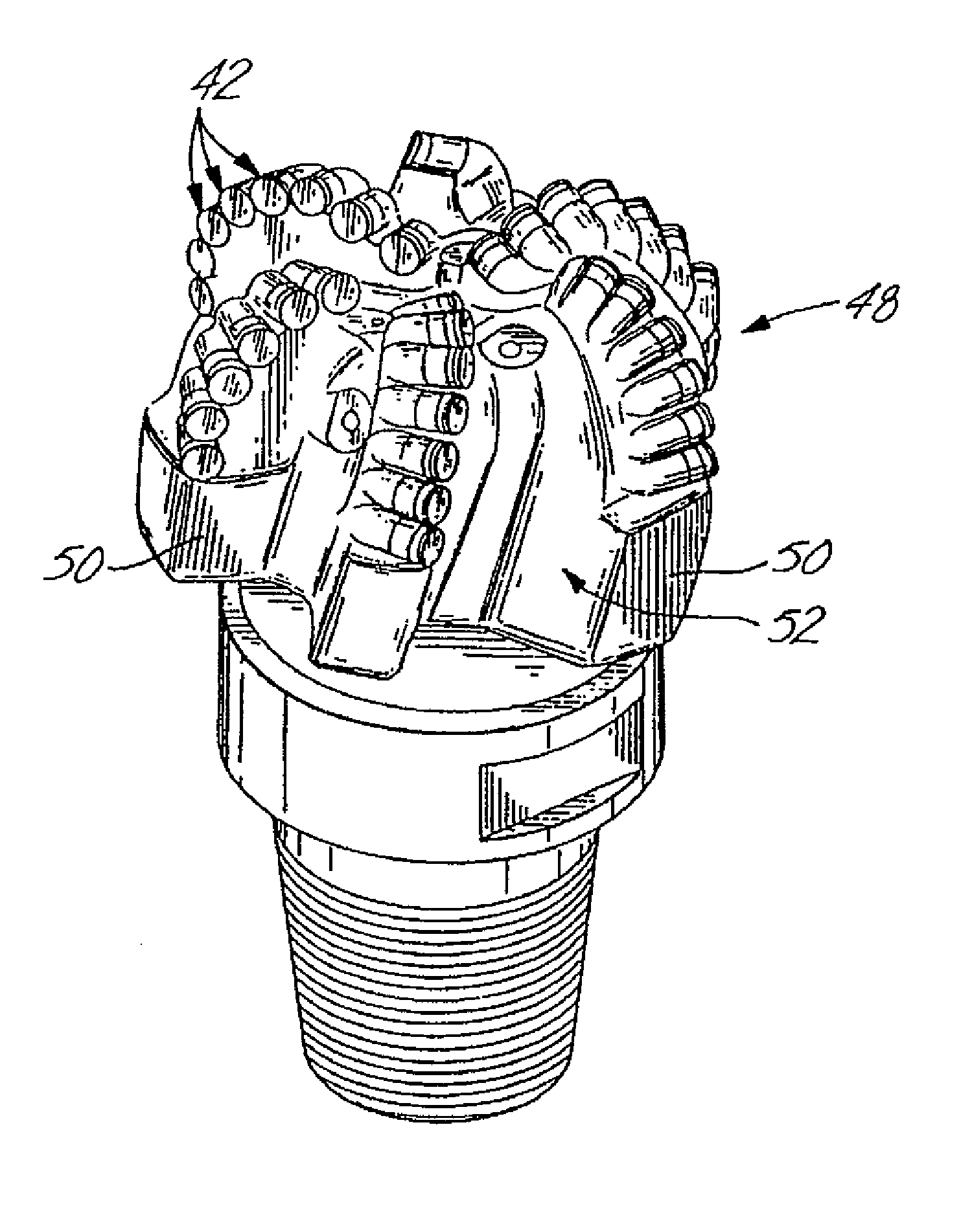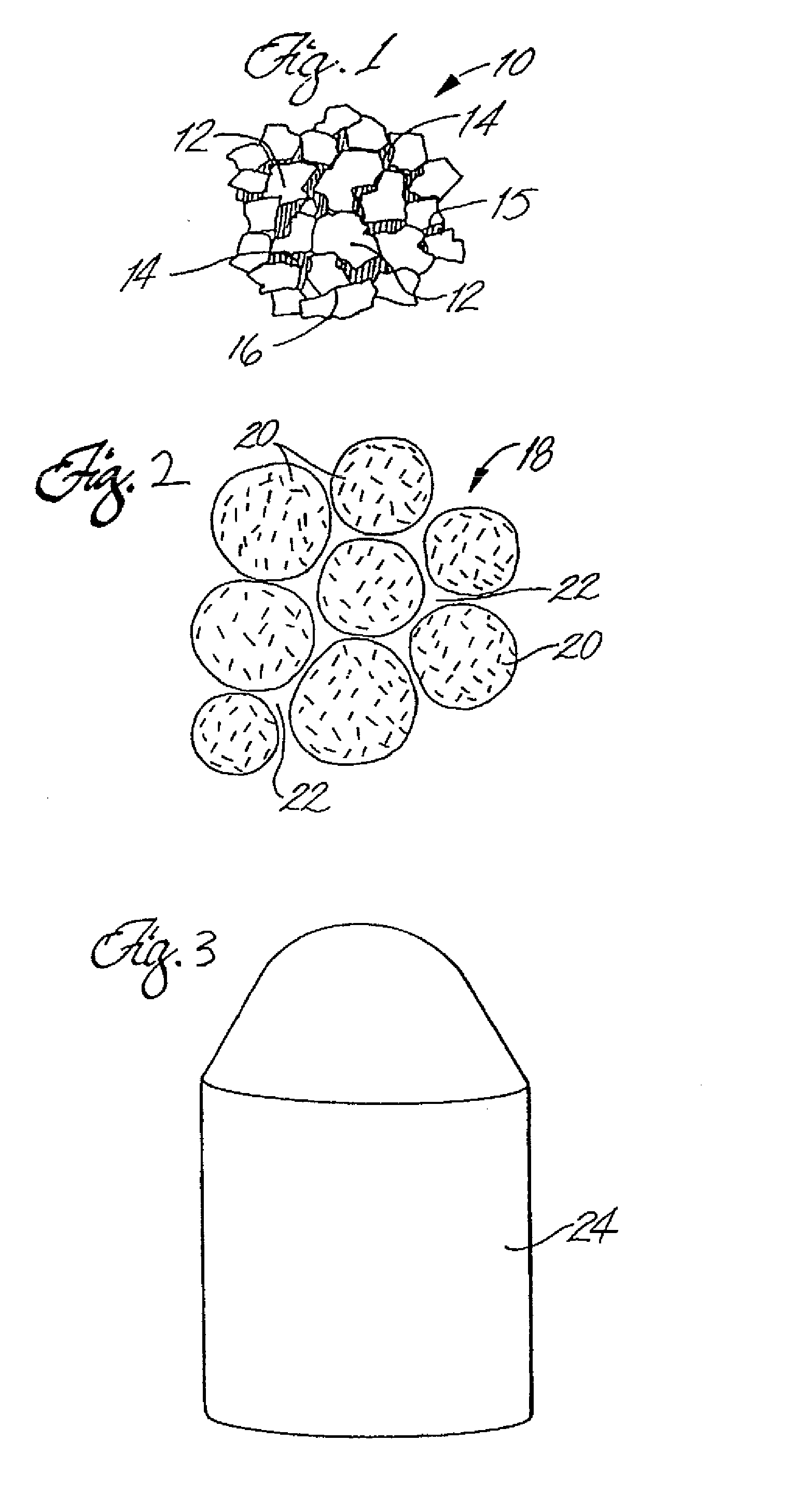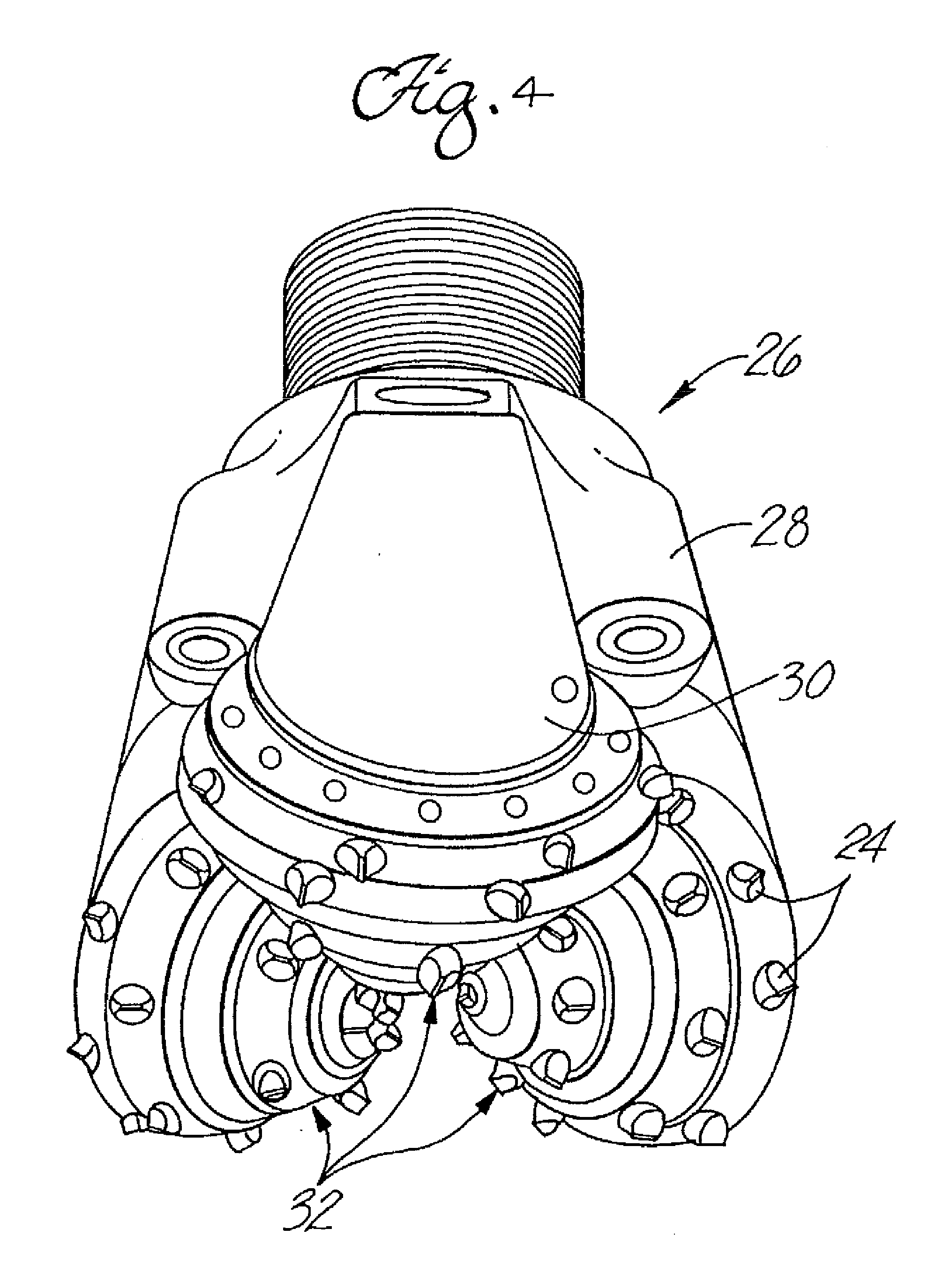Polycrystalline diamond carbide composites
a technology of polycrystalline diamond and carbide, which is applied in the field of polycrystalline diamond materials, can solve the problems of reducing the hard limiting the flexibility of being able to provide pcd coatings with desired hardness and toughness levels, and reducing the toughness of pcd materials, so as to improve the degree of fracture toughness and chipping resistance
- Summary
- Abstract
- Description
- Claims
- Application Information
AI Technical Summary
Benefits of technology
Problems solved by technology
Method used
Image
Examples
example no.1
EXAMPLE NO. 1
PCD Carbide Composite Comprising PCD Granules Formed from Synthetic Diamond Powder, Metal Powder, and Polymeric Binder
[0057] Diamond granules for forming the first region of the PCD carbide composite were made according to the mixing and palletizing steps described, from grade 817 synthetic diamond powder available from MegaDiamond of Provo, Utah. The so-formed diamond granules had an average presintered granule size of from 300 to 400 micrometers. The polymer binder that was used to form the diamond granules were ethylene vinyl acetate. The second region was formed from WC—Co powder taken from TCM grades 411, 510, 614, or 616, available from Kennametal of Latrobe, Pa. The polymer binder used to form the WC and Co slurry was polyethylene-butyl acetate.
[0058] The diamond granules and WC and Co slurry were combined and a green part was formed from the mixture. The green part was thermally debinded at from 200 to 400° C. The thermally debinded green part was sintered by...
example no.2
EXAMPLE NO. 2
PCD Carbide Composite Comprising PCD Granules Formed from Granulated and Coated Diamond Particles
[0059] Diamond granules for forming the first region of the PCD carbide composite were made from diamond tape comprising synthetic diamond powder and an organic binder. A small amount of binder metal, e.g., cobalt, was either present in the synthetic diamond powder or was added as a separate metal powder. The diamond tape was chopped or granulated into a desired size, e.g., cubes, and was introduced into a ball mill containing WC—Co balls. Alternatively, the granulated diamond tape could be milled with a WC medial in a polypropylene bottle. The milled granulated diamond particles were within the range of from 50 to 1000 micrometers in size. The granulated diamond particles and WC Co slurry were combined and a green part was formed from the mixture. The green part was thermally debinded at from 200 to 400° C. The thermally debinded green part was sintered by high-temperatur...
PUM
| Property | Measurement | Unit |
|---|---|---|
| granule size | aaaaa | aaaaa |
| granule size | aaaaa | aaaaa |
| particle size | aaaaa | aaaaa |
Abstract
Description
Claims
Application Information
 Login to View More
Login to View More - R&D
- Intellectual Property
- Life Sciences
- Materials
- Tech Scout
- Unparalleled Data Quality
- Higher Quality Content
- 60% Fewer Hallucinations
Browse by: Latest US Patents, China's latest patents, Technical Efficacy Thesaurus, Application Domain, Technology Topic, Popular Technical Reports.
© 2025 PatSnap. All rights reserved.Legal|Privacy policy|Modern Slavery Act Transparency Statement|Sitemap|About US| Contact US: help@patsnap.com



